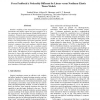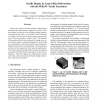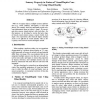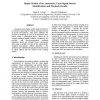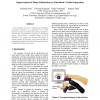HAPTICS
2007
IEEE
14 years 5 months ago
2007
IEEE
Realistic modeling of the interaction between surgical instruments and human organs has been recognized as a key requirement in the development of high-fidelity surgical simulato...
HAPTICS
2007
IEEE
14 years 5 months ago
2007
IEEE
Earlier work with a 1-D tactile transducer demonstrated that lateral skin deformation is sufficient to produce sensations similar to those felt when brushing a finger against a ...
HAPTICS
2007
IEEE
14 years 5 months ago
2007
IEEE
Human sensitivity to height differences in textured surfaces is on the order of microns. Research on human texture perception requires texture samples with precisely controlled mi...
HAPTICS
2007
IEEE
14 years 5 months ago
2007
IEEE
When we recognize objects, multiple sensory information (e.g., visual, auditory, and haptic) is used with fusion. For example, both eyes and hands provide relevant information abo...
HAPTICS
2007
IEEE
14 years 5 months ago
2007
IEEE
Transparent haptic rendering of the contact between a tool and its environment requires very frequent update of the contact forces acting on the tool. Given a rigid tool and a def...
HAPTICS
2007
IEEE
14 years 5 months ago
2007
IEEE
In this paper, we propose a new haptic interface based on measurement of two-dimensional patterns of myoelectric potentials on a surface of a forearm. A myoelectric signal is an e...
HAPTICS
2007
IEEE
14 years 5 months ago
2007
IEEE
Creating accurate haptic models of physical devices is critical to improving the realism and immersiveness of virtual environments. This paper addresses the problem of modeling th...
HAPTICS
2007
IEEE
14 years 5 months ago
2007
IEEE
When a human recognize length of an object while exploring it with their index finger, haptic and visual sensation both provide information for estimating the length of the object...
HAPTICS
2007
IEEE
14 years 5 months ago
2007
IEEE
Knob turning is a common task that should influence the design of human-machine interfaces such as prosthetic arms, teleoperated robots, and virtual environments. This study exam...
HAPTICS
2007
IEEE
14 years 5 months ago
2007
IEEE
The sensation of touch is divided into kinesthetic and tactile sensation. It is important for a touch sensation device to present both types of sensations. We mounted an electrota...
